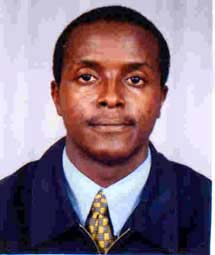Commentary [Volume 6 No. 2 (2006)]
 |
SOYA, FROM RESEARCH TO VIABLE ACTION PLAN
|
The Food and Drug Administration (FDA) of USA has already confirmed soya's beneficial effects on blood cholesterol levels. Thus, processors can legally (FDA approved) claim that “daily inclusion of at least 25g. of soya protein in a diet low in saturated fat will significantly lower blood cholesterol levels in patients with moderate to moderately high blood cholesterol levels”. And that soya protein specifically lowers LDL (bad cholesterol) while not affecting beneficial levels of HDL (good cholesterol).
Then only recently, Dr. Betty Gikonyo, Kenya 's eminent cardiologist admitted that, “there is now an epidemic of coronary heart disease in the adult population in Kenya ”. This is mainly due to the sedentary lifestyle and poor diet choices of the middle to high income brackets of the population. It is a fact that most consumers at risk of heart disease are not aware of the potent cholesterol reducing effect of soya protein and the high prevalence of heart disease in Kenya .
Soya has the potential to become a mainstream therapy for reducing cholesterol in the prevention, treatment and management of heart disease, as it has no side effects when compared with cholesterol-reducing drugs.
Soya is today available in more digestible forms than before and more processors are now including soya in their recipes; it is available in bread, processed meats, as meat analogues, as cooking oil, soya milk, and so on.
Thus, it is possible for consumers to easily consume soya foods equivalent to the critical 25g soya protein in the course of a day; but only if awareness is created.
For this to be realized, processors and medical insurers in collaboration with medical doctors/hospitals need to liaise so as to create consumer awareness.
Such a liaison would facilitate the following;
- Educate the public on the proven health benefits of soya through a credible forum.
- Update medical personnel on current research findings on soya.
- Establish processing standards for processors to ensure that all soya foods offered on the market have good digestibility when prepared in the manufacturer-recommended way. To this end, establish a ‘mark of quality” that would recommend/endorse products meeting this specification to consumers.
- Ensure that soya included in locally manufactured infant-targeted soya foods, such as infant porridge flours blended with soya, is safe and of good digestibility.
- Lobby for more funding for soya nutrition research and facilitate exchange of information between researchers working on soya nutrition locally and abroad.
I truly believe that we are at a critical stage in our knowledge of soya, where past supposition and speculation has been transformed into credible research findings that can now be used to improve people's health. It is time to turn this into an action plan and then follow through to implementation.
Thank you.
John Kiambi




